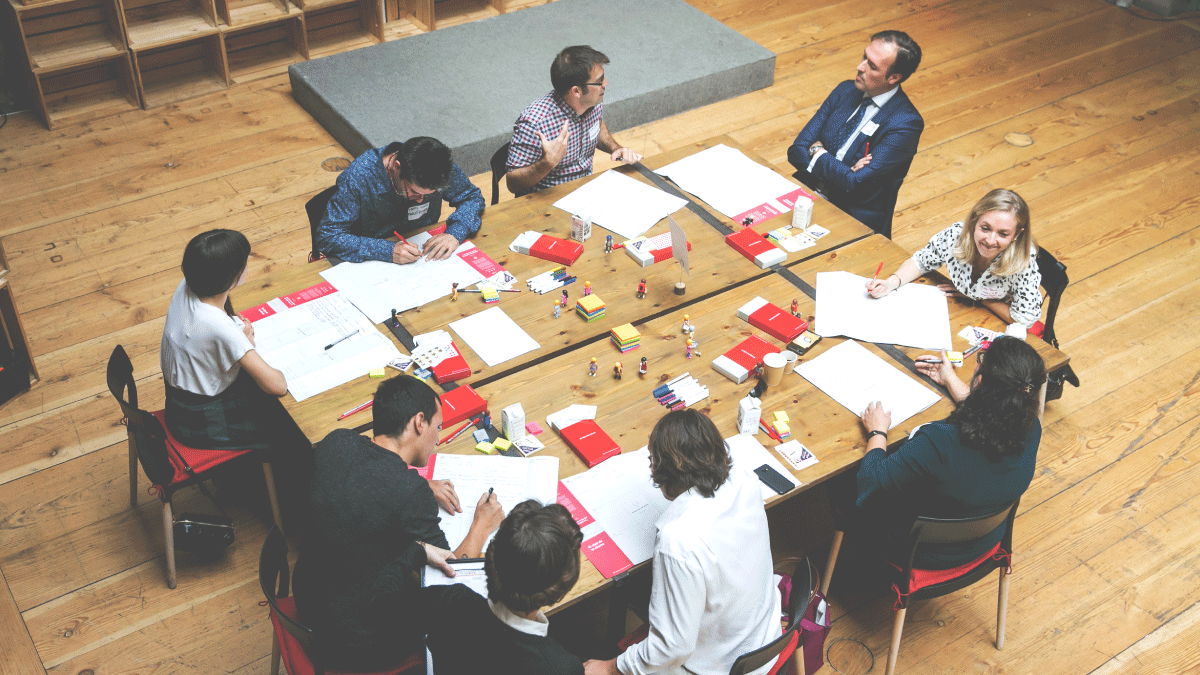A workshop or offsite can be a very powerful tool for collaboratively sharing information, generating new ideas, and/or aligning people on goals. One of the keys to running a successful workshop is having good facilitation that guides participants toward achieving the goals while nurturing an engaging environment.
Here are ten tips for more effective facilitation:
1. Start with the end in mind.
To make sure the workshop or offsite accomplishes what you want, set and voice clear goals at the beginning. It also can be helpful to identify the question(s) the workshop is trying to answer. Write the goals down on a board in front of everyone. In this way, you can track when you’ve been successful during the workshop.
2. Create a warm, inviting environment.
Offsite meetings can deliver serious results, but there’s no reason the experience itself has to feel serious. As the facilitator, people look to you to set the tone. Smiling helps create a more open environment for getting the most out of your participants.
3. Engage all participants.
Try to get everyone involved; actively invite them to join in. Be careful not to focus too much on any one or two participants or let them dominate the discussion, as the rest of the group will be less interested in or discouraged from participating.
4. Keep the group focused.
If someone is distracted/texting/not paying attention, call them by their name and ask for their opinion (people tend to pay more attention when their name is called).
5. Give time limits.
It’s easy to lose track of time during an exercise. To keep activities moving and create a sense of urgency, at the start of each exercise, communicate to the participants how much time they have to work on the exercise. Monitor progress and announce when time is nearly up. If it’s an important exercise and time can be extended, ask the group how much more time they need.
6. Divide and conquer.
The ideal group size for discussion is three to four people because it gives everyone an opportunity to significantly contribute. If the audience is larger than that, look for opportunities to break out into smaller groups to tackle the same or different objectives, then report back to ask the group which areas would benefit from improvement/refining.
7. Affinity map.
An effective way of collecting information quickly is to ask people to use sticky notes to capture information (one idea per sticky), post them all on a wall, then group them into related clusters to better identify trends. When categorizing these sticky notes, ask for audience volunteers to help sort them, and for each grouping, create a single headline with a label that best reflects the group’s theme.
8. Prioritize ideas.
Once ideas are generated, posted and affinity mapped, give participants the opportunity to select their top ones. To do so, ask each participant to mark their top five choices, with the option of using their votes all on one idea or distributed across several. Tally the votes to see which the group thinks are the top ideas.
9. Settle debates.
Ensure the conversation is about the same topic. Identify and paraphrase when audience debate seems to be “apples” and “oranges” by creating a framework for discussion; recognizing when the conversation is actually about different subjects can help resolve disagreements and audience frustration.
10. End with the start in mind.
Revisit the questions to answer and the goals for the session, and ask the audience the degree to which each was accomplished (then literally check off each one). By doing this, you can confirm that the goals were met, and participants will gain a sense of accomplishment.
If you’d like to improve your facilitation skills, have better meetings, and move your objectives forward, check out our Design Your Facilitation Strategy course.
And, if all else fails, it might be time to hire an unbiased, outside facilitator to help get your team unstuck.
For additional workshop and facilitation resources, we recommend the following:
